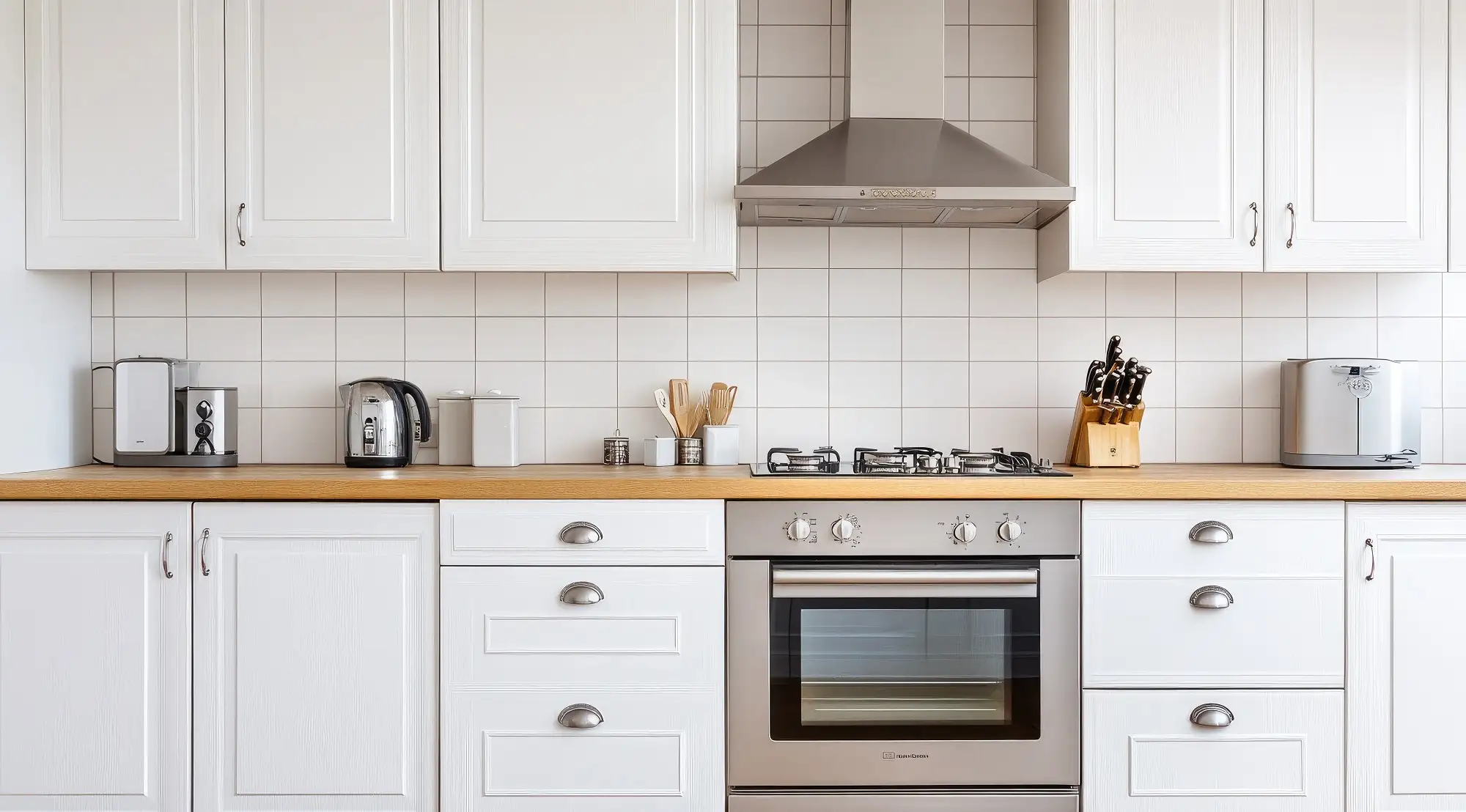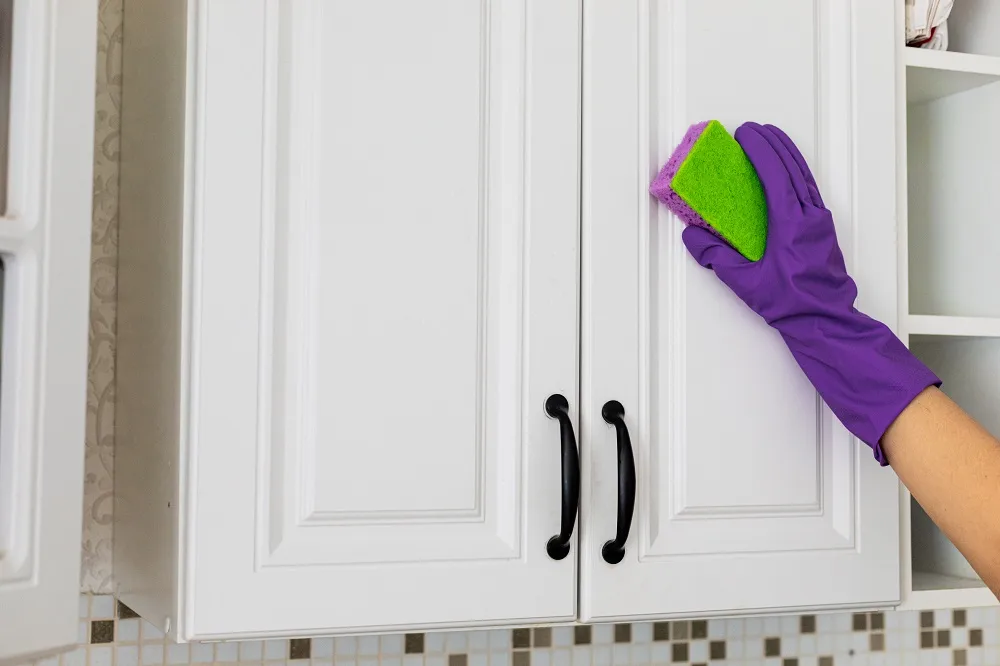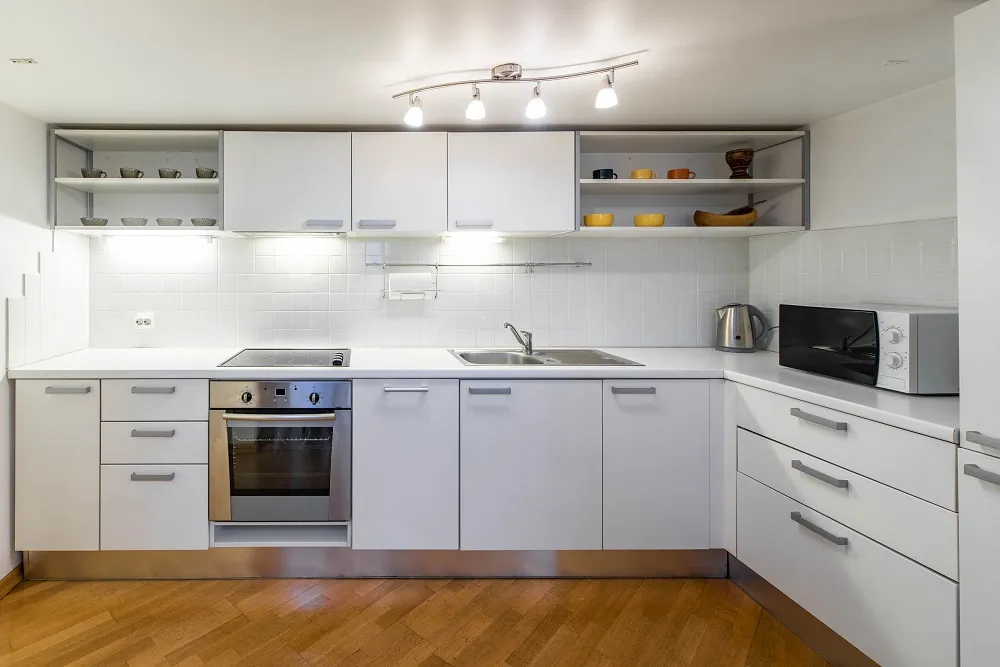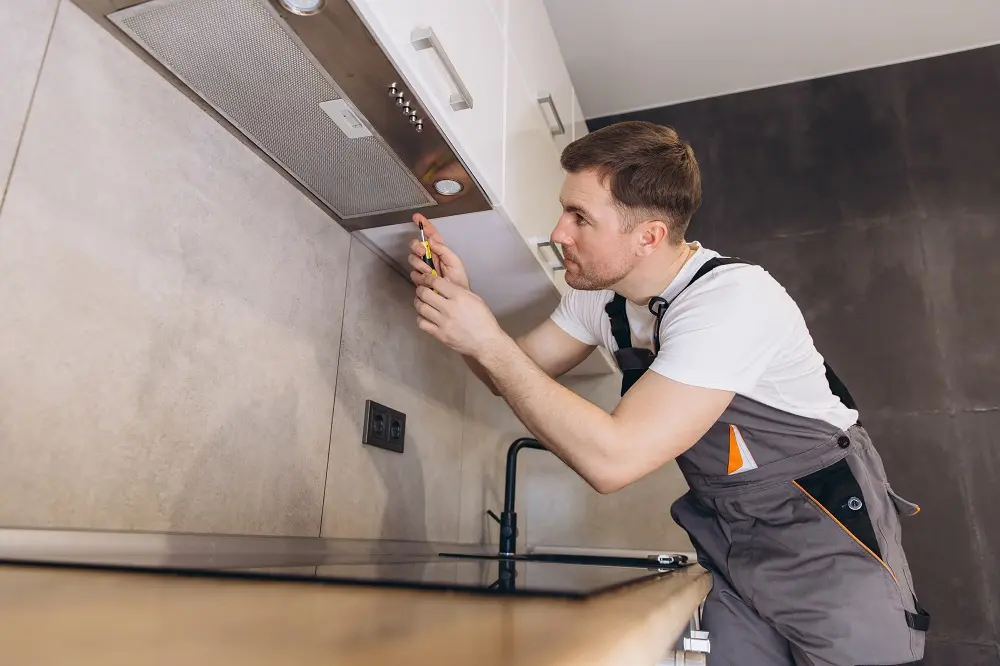
Cabinet Material Showdown: Thermofoil vs. Melamine for Homeowners
Compare thermofoil vs. melamine cabinet materials with Chicago's refacing specialists. Learn heat resistance, scratch durability & real-world performance.











Over time, white laminate cabinets can lose their brightness and develop a yellow tint that makes your kitchen feel dull and outdated. The change happens gradually, no matter how often you clean, and it’s a common issue for Chicagoland homeowners.
Whether you're dealing with sun exposure damage or grease buildup, a trusted Chicagoland cabinet refacing company can help you explore solutions beyond basic cleaning. This guide walks you through the causes of yellowing, effective DIY fixes for different cabinet materials, and when professional intervention becomes the smarter choice.
Before attempting any cleaning method, you need to identify what's causing the discoloration in your white cabinets. Multiple factors contribute to yellowing, and Chicagoland kitchens face unique challenges from seasonal temperature swings and humidity changes. The cause determines whether simple cleaning will work or if you need a more permanent solution.
Common causes of yellowing cabinets include:
Most yellowing results from several of these factors combined. Knowing which ones affect your cabinets helps you choose the right cleaning method and decide if the discoloration can be reversed.

Start with these gentle cleaning approaches that work safely on most laminate surfaces without risking additional damage. These methods target surface-level yellowing caused by grease and grime buildup rather than deep material discoloration. Try these solutions first before moving to more aggressive material-specific techniques.
Mix equal parts white vinegar and warm water in a spray bottle for a simple, non-toxic cleaner that breaks down grease. Spray it onto yellowed spots, let it sit for 3–5 minutes, then wipe with a microfiber cloth in circular motions. This works well for light discoloration and routine cleaning.
Important note: Always test the solution on a hidden area first to ensure it’s safe for your cabinet finish.
Make a thick paste by mixing three parts baking soda with one part water to tackle deeper yellowing. Apply it directly to discolored spots using a soft cloth, rubbing gently in small circular motions without heavy pressure. Let it sit for 10–15 minutes before wiping clean with a damp cloth, then dry thoroughly with a clean towel. This mild abrasive lifts trapped grime while keeping the laminate surface smooth and scratch-free.
A few drops of grease-cutting dish soap in warm water create an effective cleaner for stubborn cooking residue. Use a soft sponge to apply the solution from top to bottom to avoid streaks. Rinse thoroughly with clean water and dry right away to prevent water spots or new yellowing.
White kitchen cabinets don't have to stay yellowed. Whether you choose DIY cleaning methods or professional refacing, you have options to restore your cabinet space to its original beauty and even increase your home's resale value.
These universal cleaning methods remove surface buildup effectively but won’t correct deep discoloration that’s reached the laminate core. If your cabinets still appear yellow after a full cleaning, you may need a specialized treatment or professional refacing.
Melamine has a hard, resin-coated paper surface bonded to particleboard, making it resistant to moisture but sensitive to heat. Clean using a mild dish soap and water mixture with a soft cloth, avoiding excess moisture that could seep into seams and cause swelling. For stubborn yellowing, lightly use a magic eraser (melamine foam) without pressing too hard to protect the surface. Avoid abrasive cleaners and harsh chemicals that can break down the resin coating.
Thermofoil is a vinyl laminate fused to MDF, creating a smooth, continuous surface that tends to yellow from heat or direct sunlight. Wipe it with warm water and mild detergent, but avoid hot water, which can cause bubbling or lifting. If discoloration remains after careful cleaning, the vinyl layer has likely deteriorated and won’t return to its original color. When yellowing reaches deep into the material, replacing or refacing becomes the only lasting solution. Learn more about how to care for thermofoil cabinets to extend their lifespan.

Standard pressure laminate includes a decorative layer protected by clear melamine resin, offering better resistance to yellowing than most cabinet surfaces. Clean with a mix of vinegar and water or a trusted laminate cleaner, wiping along any texture or pattern. For more severe discoloration, try a blend of hydrogen peroxide and baking soda, testing first in an unseen spot to avoid bleaching or damage.
Material-specific cleaning approaches increase your chances of success, but they can only address surface-level problems. When yellowing has penetrated the underlying material or resulted from UV damage to the finish itself, cleaning provides temporary improvement at best. At this point, updating laminate kitchen cabinets through professional refacing becomes necessary.
Some yellowing shows that the laminate has permanently deteriorated. Recognizing these signs prevents wasted time on ineffective cleaning and avoids further damage. Here’s when to consider professional cabinet refacing or full replacement instead of repeated cleaning attempts.
If your cabinets stay yellow after multiple cleaning methods, the discoloration has likely reached the laminate’s core instead of remaining on the surface. This occurs when long-term UV or heat exposure alters the material’s composition. Cleaning products cannot reverse this kind of damage because the laminate itself has changed color.

Laminate that's lifting at edges, bubbling near heat sources, or showing cracks and chips has failed structurally and needs replacement rather than cleaning. These problems often accompany yellowing in older kitchens, indicating that the adhesive and protective coatings have deteriorated. Attempting aggressive cleaning on damaged laminate typically worsens the problem by allowing moisture damage to penetrate underneath. If you're facing peeling thermofoil cabinets, professional help becomes necessary.
When cleaning lightens some areas but not others, leaving a blotchy finish, it reveals a mix of surface buildup and deep discoloration. The lighter spots were removable grime, while the darker patches show permanent damage within the material. This uneven result often looks worse and signals that cleaning won’t restore uniform color.
Professional assessment helps you determine whether your cabinets need complete replacement or can be successfully refaced with new cabinets. Cabinet refacing offers a cost-effective middle ground that addresses both yellowing and structural issues without the expense and disruption of full cabinet replacement. Hiring a professional ensures proper assessment and quality results.
Once you've addressed existing yellowing through cleaning or refacing, simple preventive measures help maintain your cabinets' appearance for years. These strategies work whether you've refreshed old cabinets or installed new ones.
Add UV-protective window films in areas that get direct sunlight, especially south- or west-facing windows. Close blinds or curtains during peak daylight hours when the kitchen isn’t in use to minimize fading and yellowing.

Run your range hood or exhaust fan every time you start cooking to remove airborne grease and smoke before they settle on cabinet surfaces. Consider upgrading to a more powerful ventilation system if you notice persistent excess moisture or cooking odors in your kitchen. Open windows during and after cooking when the weather permits to ensure proper ventilation.
Wipe clean cabinet surfaces weekly with a mild cleaner and soft cloth to remove grease buildup before it hardens and yellows. Pay special attention to cabinets near your stove and above your dishwasher, where grease and excess steam accumulate most heavily, removing dirt and other contaminants immediately.
Install heat shields or protective panels between heat-producing appliances and nearby cabinets to minimize heat damage. Consider upgrading older appliances that release excess heat to newer, energy-efficient models that stay cooler and protect surrounding cabinetry.
These preventive measures significantly extend the life and appearance of your cabinets, regardless of the material, though modern 3D laminate materials require less vigilant maintenance than traditional options. The eco-friendly cabinet refacing approach also contributes to sustainability while preventing yellowing issues.
White laminate cabinets often yellow due to a mix of sunlight exposure, heat damage, grease buildup, and age. Surface discoloration can often be treated with DIY cleaning, but deep material yellowing requires a professional solution.
Kitchen Cabinet Guys specializes in transforming yellowed, outdated cabinets throughout Chicagoland with advanced 3D laminate refacing technology that's built to resist the very problems that plague older materials. Contact us today for a free consultation and discover how we can refresh your kitchen in just 3-5 days without the expense and disruption of a complete cabinet replacement.

Frustrated by yellowing cabinets? Kitchen Cabinet Guys offers professional refacing using durable, yellowing-resistant 3D laminate throughout Chicagoland. Schedule your free consultation today.
Call Us Now: (800) 809-7197 or
Get a Free Estimate